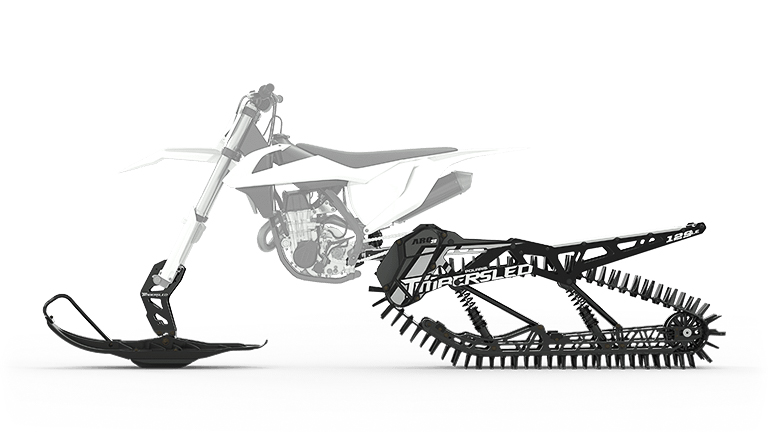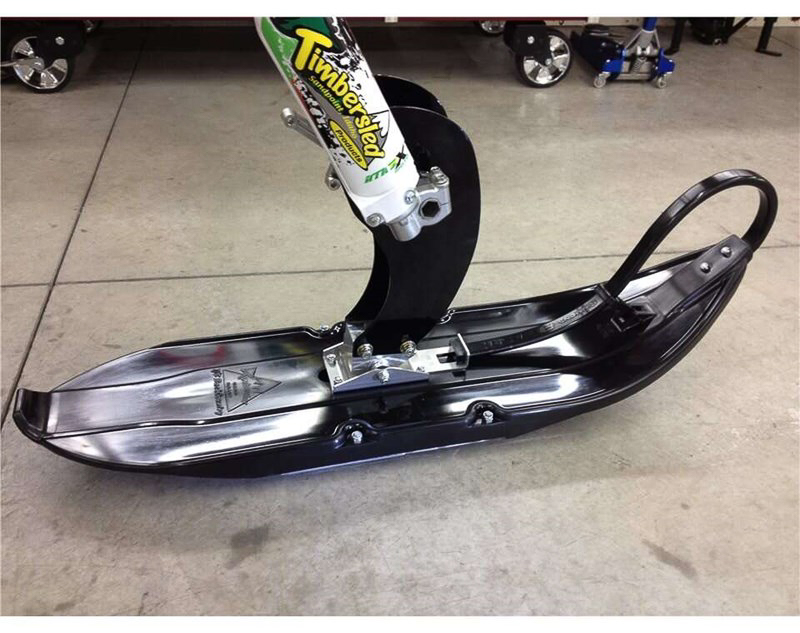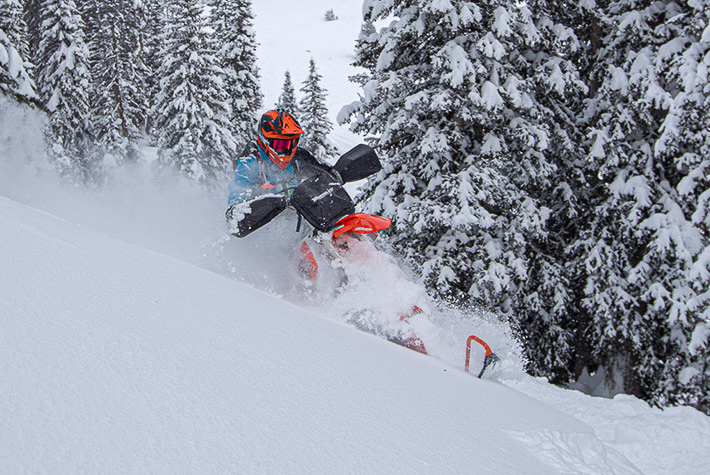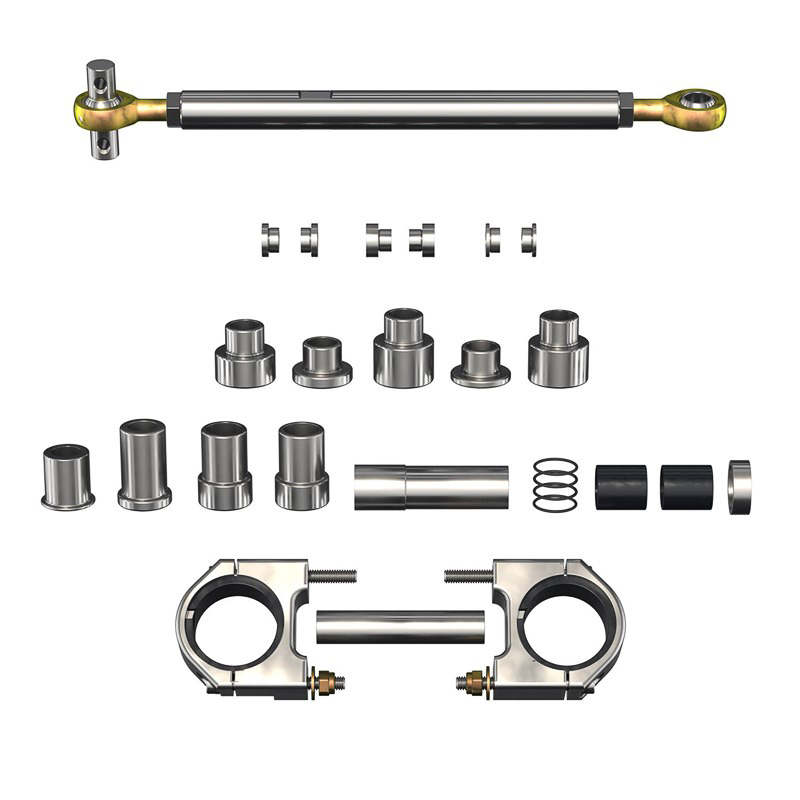Snowbiking is fast attracting the action sports herd with companies like Red Bull holding freeride and moto-cross style events worldwide. Athletes and recreationists alike are only too happy to test the seemingly unlimited possibilities of this rising winter star.
So what is a snow bike? Think about a snowmobile and a dirt bike spending a little romantic time in the garage together; their offspring would have a dirt bike frame, engine, and suspension but instead of wheels, substitute a single wide ski in the front and a tank-like track in the back.

Straight out of the gate, snow bikes have a huge advantage over snowmobiles in that you don’t need as much storage space. If you want a snow bike, chances are you already own a dirt bike and are storing it somewhere. If you don’t have a dirt bike, you’ll need one, which brings us to the major disadvantage: you can’t go buy a complete snow bike. Once you have the dirt bike, you’ll spend a few hours altering it with a snow bike conversion kit. For some, this isn’t a big deal, but for others, the DIY phase is unappealing.
Another advantage of snow bikes over sleds is your snow bike doesn’t sit untouched for more than half the year. Once the snow’s gone, pop the wheels back on and get after the dirt. The cost savings of just one machine to insure, maintain, and repair is one heck of a budget-friendly plus.
Snowbiking didn’t necessarily take off right away. The first snow bike can be traced back as far as the 1920s when motorcycle prototypes were made with two rear wheels that could be used with tracks. For the next century, design adaptations came and went, but nothing really stuck until 2002, when Allen and Natasha Mangum founded Timbersled. The Ponderay, Idaho, company developed the game-changing Timbersled technology that has become the standard design today—a three-keeled ski in the front and a toothy rear track.

The first Timbersled systems were produced in 2010, and in 2015, they joined forces with Polaris. By 2019, Timbersled had introduced the RIOT, claiming it to be “the most dirt-bike-like experience on snow.”

Aside from dirt bikers, mountain bikers are also part of the user group, stating that the hand-eye coordination and body positioning makes for an easy crossover.
Snow bikes are lighter and smaller than snowmobiles and come with 20-inch suspension travel for a cushy ride in uneven and hard-packed terrain. You can choose between a long track, which is better for racing, or a short track, ideal for freestyle riding. But if you have your sights set on a sled and now think you’ve found a less-expensive alternative, you may want to assess the advantages and disadvantages between the two. For example, snow bikes are much easier to handle in tight trees—imagine a dirt bike versus a side-by-side or quad—whereas sleds climb better because of higher horsepower and wider tracks. Here’s one of many videos comparing snowmobiles to snow bikes.
Snowbiking is compared to carving a motorized snowboard or riding a dirt bike in sand. Keep in mind that when converting a dirt bike, you’ll want something born in the nineties or later and with decent power. For example, a 300cc will work, but a 500cc seems to be the sweet spot. Look for your ideal conversion kit here. Once you choose, you’ll get all the hardware needed for your dirt bike model.

Hardware for a honda snow bike conversion
Our No Compromise Clause: We carefully screen all contributors to make sure they are independent and impartial. We never have and never will accept advertorial, and we do not allow advertising to influence our product or destination reviews.


